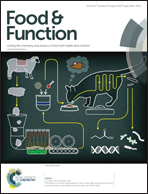Lactose malabsorption and intolerance: a review
Abstract
Food lactose and lactose intolerance are today hot topics in the field of food and nutrition. About 70% of the adult world population is lactose-intolerant, due to low levels of intestinal lactase, also called lactase-phlorizin hydrolase (LPH), a β-D-galactosidase found in the apical surface of the intestinal microvilli. This may be due to the loss of intestinal lactase in adulthood, a condition transmitted by an autosomal recessive gene, which differs in humans according to race. According to the cultural-historical hypothesis, the mutation that allows the metabolization of lactose appeared about 10 000 years ago in the inhabitants of Northern Europe where mammalian milk continued in the diet after weaning, and lactase-persistent populations were genetically selected in some areas. Many intolerant individuals can tolerate low levels of lactose in their daily diet. Probiotics have also been proposed as an alternative that could avoid some symptoms of lactose intolerance. Many products are marketed nowadays as alternatives to dairy products for lactose-intolerant individuals. However, the rules for low-lactose foods are currently not harmonised in the European Union. As scientific knowledge on lactose intolerance has notably advanced in recent decades, the aim of this work was to review the current state of the knowledge on lactose and lactose intolerance, its diagnosis and clinical management, and the various food products that are offered specifically for non-tolerant individuals.



 Please wait while we load your content...
Please wait while we load your content...